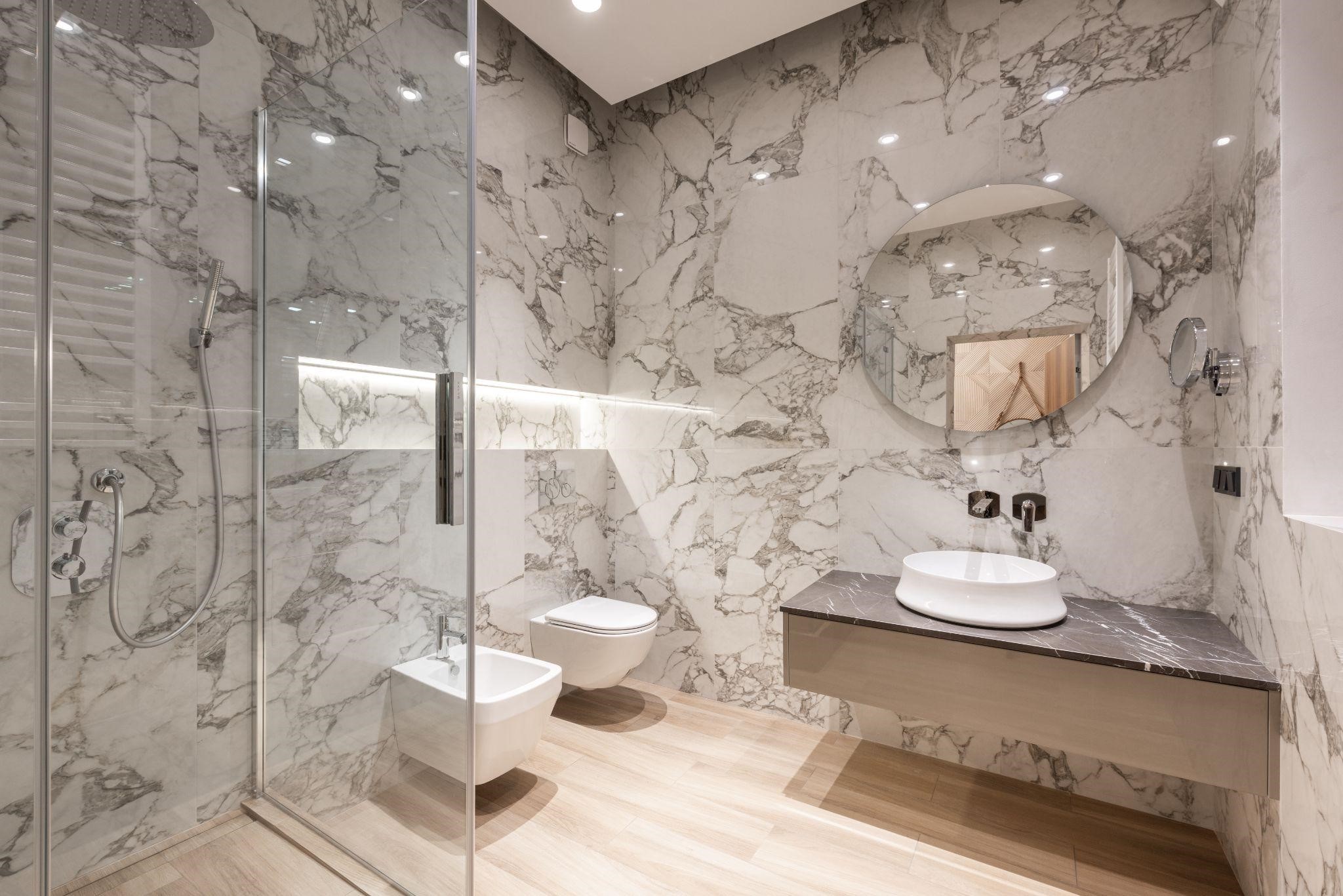Are you looking for new ways to improve your hygiene routine and overall health? Look no further than a smart toilet. With advanced technologies such as sensors and artificial intelligence, a smart toilet revolutionizes your bathroom experience by monitoring and analyzing your bodily functions, detecting health issues early on, and providing personalized health insights.
In this article, we’ll explore the potential benefits of a smart toilet for your health and why you should consider incorporating this innovative technology into your hygiene routine.
Smart Toilet, How Does It Differ From a Traditional Toilet?
With the rapid advancement in technology, there’s no home appliance that isn’t smart. The smart toilet is just another innovation of making sure homeowners have the easiest experience.
A smart toilet is equipped with advanced technologies such as sensors, cameras, and artificial intelligence to provide additional features and functions. Smart toilets can typically analyze bodily functions, such as urine and stool samples, to detect health issues early on and provide personalized health insights to users.
Smart toilets from trone plumbing include features such as automatic flushing, adjustable water temperature and pressure. This brings your experience to a whole new level.
In contrast, traditional toilets are typically simple fixtures that serve a basic function of disposing of waste. Traditional toilets also have one flush mechanism and use more water as compared to smart toilets. Lastly, smart toilets require more maintenance as compared to traditional toilets which makes it more costly as compared to traditional ones.
Different Types of Smart Toilets
There are several different types of smart toilets available on the market, and they can vary in terms of features and functionality. Here are some examples:
1. Health monitoring toilets
One great feature of a smart toilet is that it includes sensors that analyze urine and stool samples for health purposes, such as detecting early signs of kidney problems or urinary tract infections. Therefore, this helps in the early detection of diseases and infections, thus it can be treated at an early stage.
2. Bidet toilets
These smart bidet toilets include a built-in bidet function that uses water to clean the user after using the toilet. They also include features such as adjustable water temperature and pressure, and air drying. With just a press of the button, the bidet retracts from the rim of the toilet.
An example of this is the bidet toilet that’s commonly found in Japan. This smart toilet basically has buttons on the side that you can use to clean yourself.
3. Self-cleaning toilets
These smart toilets automatically clean and sanitize themselves after each use, reducing the need for manual cleaning. Self-cleaning toilets is a type of smart toilet that is equipped with advanced technology that enables them to clean and sanitize themselves after each use.
These toilets use a combination of technologies such as UV light, electrolyzed water, and powerful flushing mechanisms to remove waste, kill bacteria, and prevent odors. Features such as automatic cleaning, odor control, and sanitizing itself are just a few features of self-cleaning toilets.
4. Entertainment toilets
These luxury smart toilets include features such as built-in speakers, Bluetooth connectivity, and even virtual reality capabilities. Literally, you can have a good time while doing your business in the toilet.
5. Eco-friendly toilets
Eco-friendly toilets are designed to reduce the environmental impact of traditional toilets, which is a major source of water waste and pollution. These smart toilets incorporate a variety of features and technologies that help conserve water, reduce energy consumption, and minimize the use of harmful chemicals.
Many eco-friendly toilets incorporate water-saving features, such as dual-flush options, which allow the user to choose a partial or full flush depending on the amount of waste. Some toilets also use low-flow technology, which reduces the amount of water used per flush.
Composting toilets are a type of eco-friendly toilet that use natural processes to break down waste and convert it into compost. These toilets typically use little or no water, making them ideal for areas with water shortages or where septic systems are not available.
Meanwhile, some eco-friendly toilets use energy-efficient technology, such as LED lighting and solar-powered ventilation fans, to minimize energy consumption and reduce carbon emissions.
Eco-friendly toilets use natural cleaning agents, such as vinegar or baking soda, to clean and sanitize the toilet bowl, rather than harsh chemicals that can harm the environment and human health.
6. Voice-activated toilets
Voice-activated toilets are a type of advanced toilet that is controlled by voice commands. These toilets are equipped with sensors and microphones that detect voice commands, allowing users to operate the toilet hands-free.
Voice-activated toilets eliminate the need for physical contact with the toilet, reducing the risk of germ transmission and improving hygiene. Many voice-activated toilets allow users to customize settings such as seat temperature, water temperature, and water pressure, using voice commands.
Meanwhile, some voice-activated toilets come with integrated bidet functions and automatic flushing, such as water jets for cleaning, air dryers, and deodorizers. These functions can be controlled by voice commands.
Furthermore, many voice-activated toilets come with energy-saving features such as LED lighting, low-flow water systems, and automatic shut-off, which helps reduce energy consumption and lower utility bills. More so, voice-activated toilets are ideal for people with disabilities or mobility issues, who may have difficulty reaching or operating a traditional toilet.
Significance of Smart Toilet in Monitoring and Analyzing Bodily Functions to Improve Health
Smart toilets are significant in monitoring and analyzing bodily functions to improve health because they provide valuable insights into a user’s health and wellness. Smart toilets detect potential health issues by analyzing urine and stool samples, such as kidney problems, urinary tract infections, and even certain types of cancer. Furthermore, they also track changes in hydration levels, nutrient intake, and digestion patterns.
Additionally, smart toilets provide users with personalized health recommendations and feedback, such as suggestions for improving their diet or staying hydrated. By providing real-time health data and insights, smart toilets help users take a proactive approach to their health and potentially prevent or manage health issues before they become more serious.
Early Detection of Health Issue as a Smart Toilet Feature
Smart toilets detect various types of health issues early on by analyzing urine and stool samples. Some of the health issues that a smart toilet detects early include:
- Dehydration – by analyzing the color and concentration of urine, a smart toilet detects if a person is dehydrated or not.
- Kidney problems – changes in urine output or the presence of certain chemicals or proteins in urine can indicate kidney problems.
- Urinary tract infections – changes in the levels of bacteria in urine can indicate the presence of a urinary tract infection.
- Digestive issues – analyzing stool samples can detect digestive issues such as malabsorption or inflammation.
- Certain types of cancer – changes in urine or stool samples can indicate the presence of certain types of cancer, such as bladder or colon cancer.
Smart Toilet Compare and Other Health Monitoring Devices: A Comparison
Smart toilets and other health monitoring devices, such as wearable fitness trackers and blood pressure monitors, are designed to help users monitor and improve their health. Here are some key differences between smart toilets and other health monitoring devices:
- Data collection: Smart toilets collect data through analysis of urine and stool samples, while other health monitoring devices typically collect data through sensors that track activity, heart rate, blood pressure, and other biometric indicators.
- Health insights: Smart toilets provide insights into overall health and wellness, as well as specific health conditions related to the urinary and digestive systems. Other health monitoring devices may provide insights into different aspects of health, such as physical activity or cardiovascular health.
- User experience: Smart toilets offer a unique user experience, as they are used for a specific function and may include features such as bidet functions or self-cleaning capabilities. Other health monitoring devices may be worn on the wrist or placed on the body and may have different features and functionality.
- Cost: Smart toilets can be relatively expensive compared to other health monitoring devices, which may be more affordable and accessible for some users. However, the smart toilet’s main function is what greatly sets it apart from wearable fitness devices.
Personalized Insights to Smart Toilet Users
Smart toilets provide personalized health insights to users based on the data they collect through sensors and analysis of urine and stool samples. These insights include recommendations for improving hydration levels, adjusting diet, or monitoring specific health conditions. For example, a smart toilet might suggest increasing water intake if it detects signs of dehydration or recommend changes to a user’s diet if it detects issues with digestion.
Additionally, some smart toilets can provide information on the user’s body composition, such as their weight, body mass index (BMI), and body fat percentage, and offer guidance on how to maintain a healthy weight. By providing personalized insights, smart toilets can help users make informed decisions about their health and wellness and take proactive steps to improve their overall health.
Affordability of Smart Toilets
Smart toilets vary widely in price, with some models costing several thousand dollars or more. This makes the cost relatively expensive compared to traditional toilets, which typically cost a few hundred dollars or less. However, as with many new technologies, the cost of smart toilets is likely to decrease over time as they become more widely adopted and production costs decrease.
In addition, the long-term benefits of using a smart toilet, such as early detection of health issues, improved hygiene, and reduced water consumption, may outweigh the initial cost for some users. Some health insurance plans may even cover the cost of a smart toilet if it is deemed medically necessary.
Bear in mind that it is also worth noting that not all smart toilets are equally expensive. Some models may be more affordable than others, depending on the features and functionality they offer. Ultimately, the affordability of a smart toilet will depend on the specific model and manufacturer, as well as the individual’s budget and priorities.
Bottom Line
The use of smart toilets is beneficial in a variety of different ways. They are beneficial to one’s health, in addition to the fact that they provide beauty to the interior of one’s home. Monitoring an individual’s overall health is made much simpler because to the ability to detect diseases and infections in their early stages.
Even though a conventional toilet is less expensive and requires less effort to clean and maintain, the advantages of having a smart toilet far outweigh the additional expense. Due to the rapid growth of technology, now is the ideal time for each of us to install a high-tech toilet in our houses. This will enable users to revolutionize our regular hygiene practices and achieve the highest possible level of health.
FAQS
1. How can a smart toilet help with early disease detection?
Smart toilets are equipped with advanced sensors that analyze the urine and stool samples for early signs of diseases such as cancer, diabetes, and kidney problems. By regularly monitoring health through these samples, a smart toilet helps catch potential health issues early on, when they are more easily treatable.
2. How does a smart toilet help maintain proper hydration levels?
Dehydration can have a significant impact on your health, leading to issues such as fatigue, headaches, and constipation. Smart toilets can measure your urine’s specific gravity, which can give you an indication of your hydration levels. Based on this measurement, a smart toilet can provide recommendations on how much water you should drink to maintain optimal hydration levels.
3. Can a smart toilet help improve digestive health?
Yes, a smart toilet can provide insights into your digestive health by analyzing your stool’s color, consistency, and frequency. Based on this data, a smart toilet can help you identify potential digestive issues and provide recommendations on how to improve your gut health through diet and lifestyle changes. Additionally, some smart toilets are equipped with features such as bidets and heated seats, which can help alleviate issues such as constipation and hemorrhoids.









